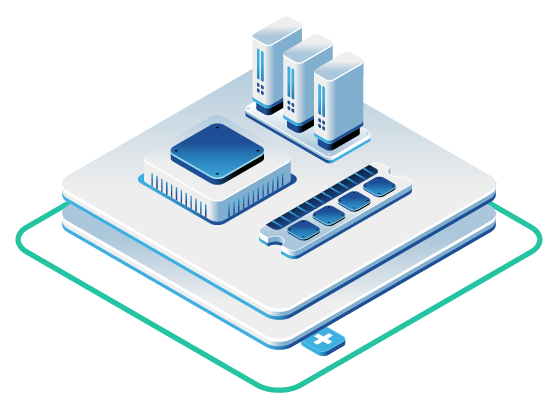Migrating to a private cloud, like OpenStack, can improve areas like control and security for businesses. However, like most things, it comes with challenges such as potential compatibility issues, data migration risks, and complex performance tuning.
Here’s the quick version of how to address them:
- Integration Issues: Ensure hardware, software, and legacy systems align with OpenStack requirements before you start moving. Plan thoroughly with resource mapping and risk assessment.
- Data Migration Risks: Maintain data integrity, minimize downtime, and prevent loss using tools like Storware Backup. Use automation tools to streamline processes.
- Performance Tuning: Use tools like OpenStack Watcher for load balancing and resource allocation. Test in staging environments to ensure continuity.
Now let’s get into the real details of how to solve private cloud migration challenges!
Challenges in Private Cloud Migration
Moving to a private cloud setup, especially with OpenStack, comes with its fair share of technical and operational hurdles. Understanding these issues is key to crafting a migration plan that works. Tackling these challenges directly can lead to a smoother transition.
Integration and Compatibility Problems
One of the biggest headaches during migration is ensuring that existing systems work with OpenStack infrastructure. A major roadblock? Proprietary formats, for example VMware’s VMDK files, which demand special handling during the migration process.
Here are a few compatibility areas to focus on:
- Hardware Assessment: Make sure your infrastructure aligns with OpenStack requirements.
- Software Compatibility: Check that your applications and their dependencies are supported.
- Legacy System Integration: Ensure older systems can work within the new cloud environment.
Data Migration Difficulties
Preserving data integrity while keeping disruptions to a minimum is a major challenge, especially when dealing with large datasets or workloads that need to keep running during the migration.
Key considerations for data migration include:
- Maintaining data consistency and validating transfers.
- Minimizing service downtime during the process.
- Protecting against data loss at every stage.
Tools like Storware Backup can help simplify these processes, reducing complexity and risk.
Scaling and Performance Issues
Ensuring optimal performance in an OpenStack environment requires attention to resource allocation and workload management. Challenges like load balancing, resource distribution, and overall system efficiency need direct solutions.
| Challenge Area | Impact | Mitigation Approach |
|---|---|---|
| Load Balancing | Service availability | Use OpenStack Watcher |
| Resource Allocation | Overall performance | Leverage automation tools |
| Workload Distribution | System efficiency | Opt for a phased migration |
OpenStack’s Watcher tool is very helpful in managing these issues. It allows organizations to fine-tune resource allocation and workload distribution, which is critical in production environments where performance must meet or exceed existing standards [2].
To overcome these hurdles, thorough planning and the right expertise are essential. Partnering with experienced OpenStack providers can make a world of difference in helping organizations navigate these challenges.
Solutions for Migration Challenges
After identifying the main challenges, organizations need strategies to ensure a smooth private cloud migration. OpenStack’s flexibility and wide range of tools offer several ways to tackle common obstacles.
Planning the Migration
A detailed migration plan is key to reducing complexity and minimizing delays. By addressing potential risks early, you can better handle compatibility and integration issues.
| Planning Phase | Activities | Expected Outcomes |
|---|---|---|
| Assessment and Resource Mapping | Evaluate infrastructure, check compatibility, analyze workloads | Clear inventory and resource allocation strategy |
| Timeline Creation | Define milestones, map dependencies | Organized, phased migration schedule |
Once the plan is in place, automation tools can help simplify and speed up the process.
Using Automation Tools
Automation tools play a big role in reducing manual work and avoiding errors. OpenStack supports over 50 storage drivers, which makes it easier to connect with existing systems. For example, solutions like Storware Backup and Recovery ensure smooth data protection across VMware and OpenStack environments.
While automation helps speed things up, maintaining smooth business operations during migration requires thorough testing and monitoring.
Ensuring Continuity
Maintaining uninterrupted business operations during migration takes careful preparation. Setting up a staging environment allows you to catch potential issues and test performance before going live.
To ensure continuous service:
- Document current performance metrics for comparison.
- Test compatibility and performance in a staging environment.
- Create and validate a rollback plan for quick recovery if needed.
OpenStack’s monitoring tools can help you track performance and address problems as they arise. This ensures services stay available while keeping data secure throughout the migration process.
Best Practices for Migration
Moving to a private cloud like OpenStack requires diligent planning to ensure both speed and stability. Here’s a structured approach to help you manage the process effectively:
Phased Migration Strategy
Breaking the migration into smaller steps helps reduce risks and ensures smoother transitions. Here’s how you can approach it:
| Phase | Focus Area | Key Activities |
|---|---|---|
| Initial | Non-critical workloads | Set up test environments, run pilot migrations |
| Intermediate | Supporting systems | Migrate data, conduct integration testing |
| Advanced | Core applications | Shift production workloads, validate performance |
| Final | Optimization | Fine-tune the system, retire legacy setups |
This phased plan tackles challenges like compatibility and downtime, offering a clear path to complete your migration.
Working with OpenStack Providers
Choosing the right OpenStack provider can make or break your migration. Evaluate them based on these factors:
- Technical expertise: Providers with proven migration experience are a safer bet.
- Support capabilities: Ensure they offer 24/7 support for critical issues.
- Infrastructure flexibility: Confirm they can handle your specific workload needs.
Post-Migration Monitoring and Optimization
Once the migration is done, continuous monitoring is essential to maintain peak performance and find areas for improvement. Focus on tracking these metrics:
| Metric Category | What to Monitor | Why It Matters |
|---|---|---|
| System Performance | CPU, memory, storage usage | Detects resource bottlenecks |
| Application Response | Service latency, throughput | Ensures a smooth user experience |
| Resource Utilization | Network bandwidth, storage IOPS | Balances cost and performance |
Use automated tools to monitor these metrics in real-time. Set alerts for when thresholds are exceeded, so issues can be addressed promptly.
Conclusion: Private Cloud Migration Challenges and How to Overcome Them
Migrating to a private cloud, especially within OpenStack environments, comes with its fair share of technical and operational challenges. Success depends on thorough planning and the use of reliable solutions to tackle them.
The shift from traditional infrastructure to a private cloud involves addressing three main areas:
| Area | Common Challenge | How It Helps |
|---|---|---|
| Technical Integration | Compatibility and performance issues | Automation minimizes risks during migration |
| Operational Continuity | Downtime and data loss | Ensures reliable service and safeguards data |
| Resource Management | Scaling and efficiency | Improves performance while managing costs |
By focusing on these areas, organizations can streamline their migration process and reduce potential setbacks.
What Businesses Should Do Next
To make the migration process smoother and more effective, businesses should focus on practical steps and consider collaborating with experienced OpenStack providers like OpenMetal. Our team is here to provide technical expertise, guidance, and recommendations to ensure you have a successful migration.
Whatever path you choose, here are some actionable takeaways to help guide your migration process:
- Evaluate Current Systems: Review your infrastructure and workloads to identify gaps.
- Set Clear Goals: Define measurable objectives to align the migration with business needs.
- Choose the Right Tools: Opt for automation tools that fit your technical setup.
- Track Progress: Use KPIs to monitor the migration’s success and overall system performance.
Read More on the OpenMetal Blog


































